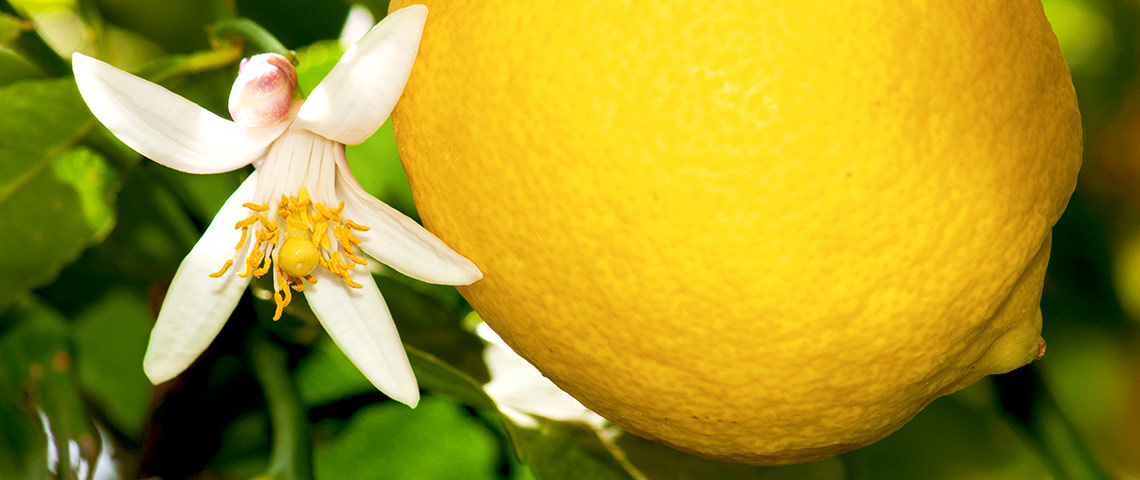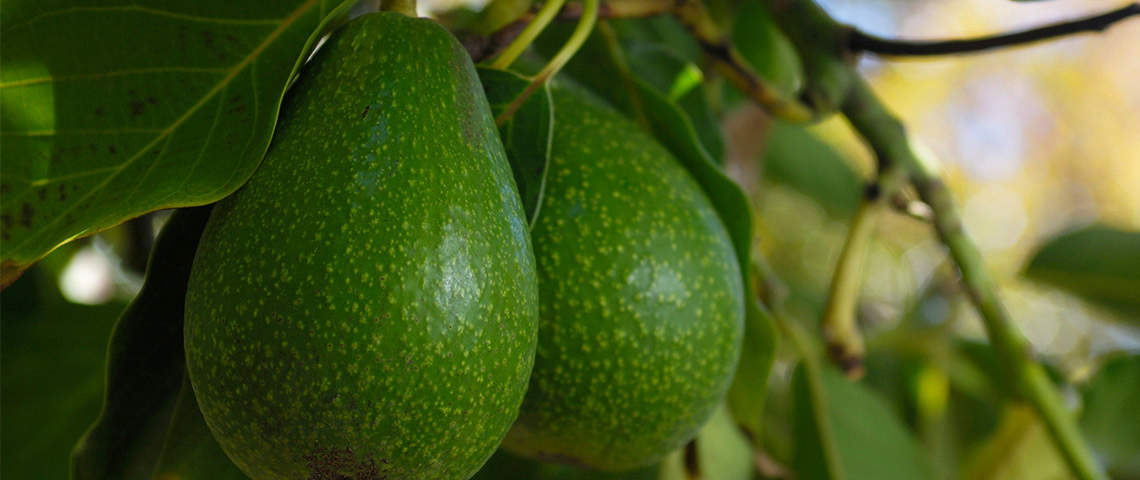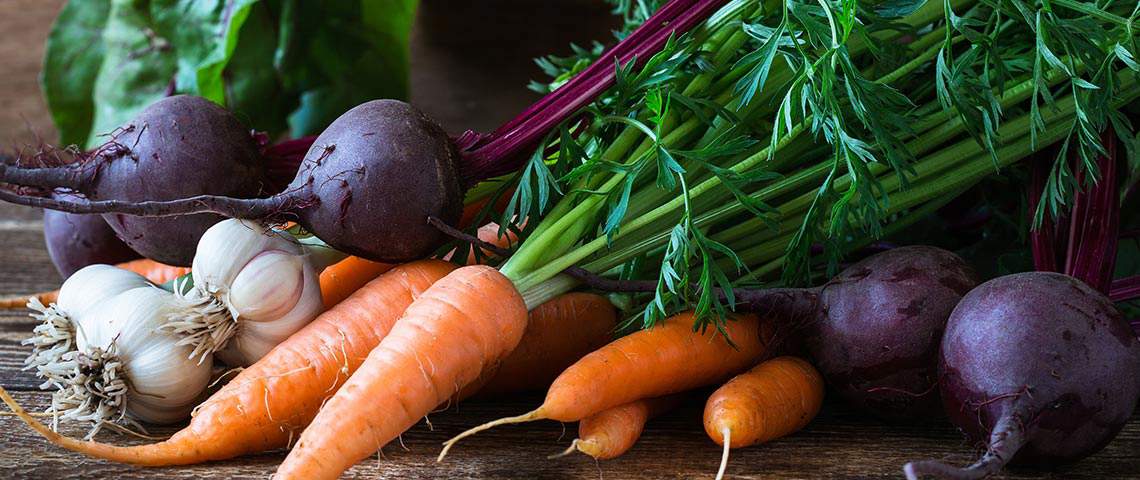How to Grow and Care for an Indoor Lemon Tree
If you think homegrown lemons are out of your reach, think again. Regardless of your climate or your yard size, you can grow a container lemon tree indoors and reap rewards year-round. Sweet-smelling flowers, glossy foliage and tart, tasty fruit so vibrant it doubles as décor — yes, indoor lemons provide all that and more. With these citrusy basics and your special brand of TLC, you can have homegrown lemons in no time.
- Picking the Best Lemon for Indoor Growing
- Choosing Your Indoor Lemon Tree Container
- Planting Your Indoor Lemon Tree
- Placing Your Lemon Tree in Your Home
- Watering and Fertilizing Indoor Lemons
- Pollinating and Pruning Indoor Lemons
Picking the Best Lemon for Indoor Growing
Indoor lemons take a special kind of tree: one that stays small and delivers lemons soon. Outdoors in warm climates, regular lemon trees grow 20 feet tall and take up to six years to bear fruit. Unless you have really high ceilings and more patience than most, dwarf lemon trees are the way to go indoors.
With dwarf lemons, nursery growers graft lemon varieties onto special dwarfing roots that speed up fruit-bearing and keep trees small. Some of the easiest, most popular indoor "lemon" trees are actually crosses with other fruits that do well in pots.
Some favorite dwarf lemon trees for indoor growing include:
- Dwarf Improved Meyer – The easiest lemon tree for indoor growing, this lemon and mandarin orange cross offers sweet, tangy lemons you'll adore.
- Dwarf Ponderosa – Another popular indoor choice, this lemon and citron cross bears jumbo-sized lemony fruits with thick skins perfect for lemon zest.
- Dwarf Variegated Pink Lemonade – This exotic true lemon tree has green-and-yellow variegated fruit with pink flesh. But don't expect pink juice — it's clear.
Dwarf lemons sold by most nursery growers are two- to three-year-old trees. That's old enough to bear some fruit, but still immature. Most indoor dwarf Meyer lemon trees eventually reach at least 3 to 4 feet tall. Other indoor lemon varieties can grow to 6 feet or more. Container size helps limit a tree's eventual height, so keep that in mind. The smaller the root system, the smaller the tree.
If your heart's set on growing a lemon tree from a seed, understand that it won't yield the same variety as the one that created that seed. Starting a lemon tree from a cutting will create the same variety but, honestly, it's not easy. Either way — seed or cutting — your new tree won't have the small size and disease resistance of a grafted dwarf. Plus, you'll wait years longer for lemons.
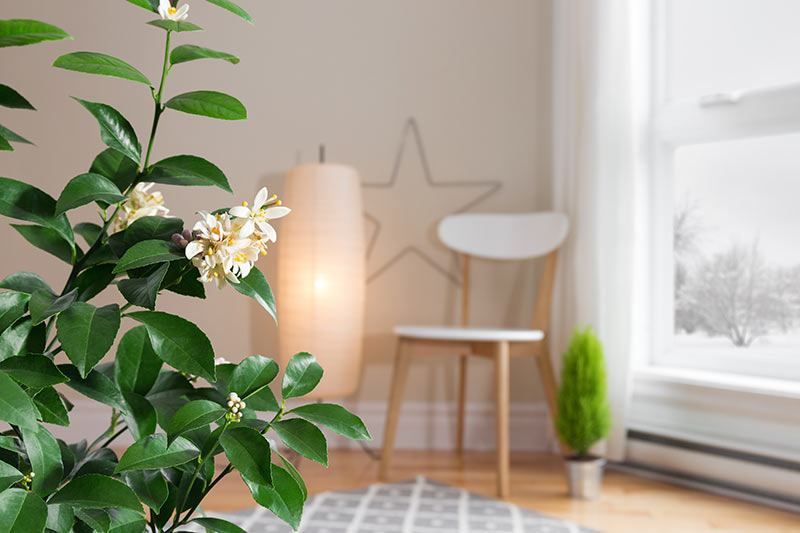
Lemon blossoms fill your home with amazing fragrance.
Choosing Your Indoor Lemon Tree Container
Don't be tempted to start your lemon tree in a pot big enough to accommodate its final size. It's much better to start out small. Oversized pots make it harder to tell when your lemon tree needs water and when it doesn't. For most young trees, a 12-inch-diameter container is the perfect starter size. Over the years — yes, years — gradually increase to a pot double that size in width and depth.
Lemon trees do well in all kinds of containers, from lightweight resin to porous terra cotta. The primary requirements are large, unobstructed drainage holes and lighter colors. Like other citrus trees, lemons prefer cool roots, so avoid pots in black or other dark colors that get hot in sun.
Always use a deep saucer under your pot to protect floors from errant water, and consider a wheeled plant dolly under that. Lemon trees get very heavy as they mature. A dolly makes life much easier.
Planting Your Indoor Lemon Tree
Like avocado trees, lemon tree roots need lots of oxygen. Proper planting and good drainage are keys to health and happiness. When planting your tree, the flare at the base of the trunk should end up slightly above your soil line. This helps ensure roots can breathe.
Start by filling the new container's bottom with potting soil mix and tamp lightly. Pennington Rejuvenate Premium All Purpose Potting Soil Mix revitalizes soil and nurtures plant roots with essential plant nutrients and earth-friendly ingredients like earthworm castings, bio-stimulants and sustainably sourced peat. Fill around your tree, making sure it can't settle too deep in the pot. Leave a few inches at the top for watering.
Indoor lemon trees do best when their soil stays evenly moist. The wetting agent and water-holding crystals in Pennington Rejuvenate Premium All Purpose Potting Soil Mix help you keep moisture consistent and make the most of every drop of water you use.
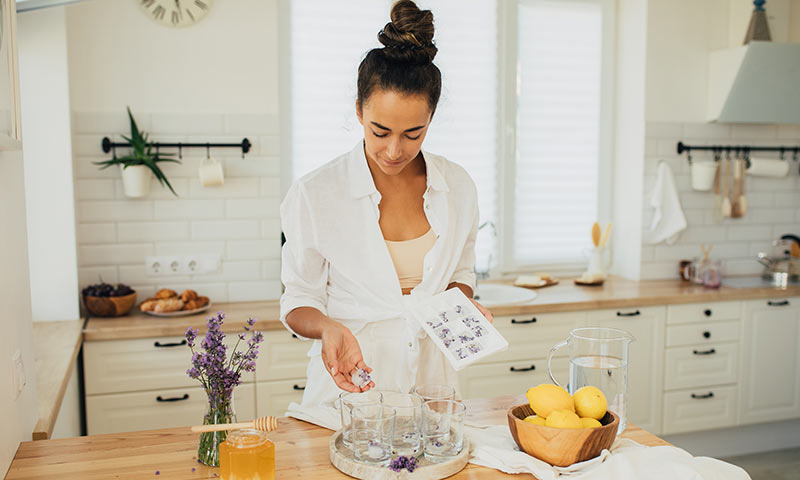
Go with nursery-grown trees for homegrown lavender lemonade with half the wait.
Placing Your Lemon Tree in Your Home
Once your lemon tree's in its new container, it's ready for its new environment. Two factors are critical to your indoor lemon tree's success:
- Light: For peak performance — from fragrant blooms to spectacular fruit — your indoor lemon tree needs around eight hours of sunlight each day. The more light it gets, the better. Unobstructed south- or southwest-facing windows make the best indoor locations. If you're short on sunlight, supplement with extra lighting.
- Temperature: Indoor lemon trees grow best with nighttime temperatures around 65 degrees Fahrenheit, which suits most homes fine. Lemon trees don't like drafts of any temperature, so keep them away from heating and air conditioning ducts.
During warm summer months, indoor lemons enjoy a little vacation outdoors. When all danger of spring frost is past and nighttime temps consistently hit 55 to 60 degrees, gradually acclimate your tree to outside. It'll love the extra sun — and reward you with fruit. Before fall frost comes, move your tree back inside. Never rush a move. Abrupt light and temperature changes can make fruit drop.
Watering and Fertilizing Indoor Lemons
To keep lemon tree roots strong and healthy, allow the soil to dry out about 3 inches deep before you water. Then water thoroughly, so water runs out the pot's drainage holes. Keep the soil moist, not overly wet, but never let it dry out completely. You can get an inexpensive soil moisture meter online or in any garden centers — or just use your index finger. That works, too.
During active growth, especially during outdoor summers, container lemon trees may need daily watering. During winter, water only enough to moisten soil. Your timing varies depending on temperatures in your house, the container size and your tree's size. Watch for warning signs of overwatering — like yellow leaves, which can mean unhappy, soggy roots.
For great-tasting fruit and glossy foliage, feed your indoor lemon the plant nutrients it needs. Like other citrus trees, lemon trees need plentiful nitrogen and other essential nutrients, including magnesium and iron. This is especially important for indoor lemon trees, which rely on your potting soil and plant food for their nutrient needs.
With Pennington Rejuvenate Plant Food Citrus & Avocado 5-3-4, you can give your indoor lemon an ideal blend of organic and natural ingredients to revitalize its soil and help it thrive. Nourished from the inside out, your tree will grow stronger and bring you bigger, more plentiful harvests than unfed trees. You and your tree deserve that.
As your tree gets older, its feeding needs will change, so follow label instructions for your lemon tree's age and its trunk diameter (measured 4 to 6 inches above the soil line). Feed your tree at potting time and every one to two months during the growing season. Avoid disturbing its shallow roots when you feed.
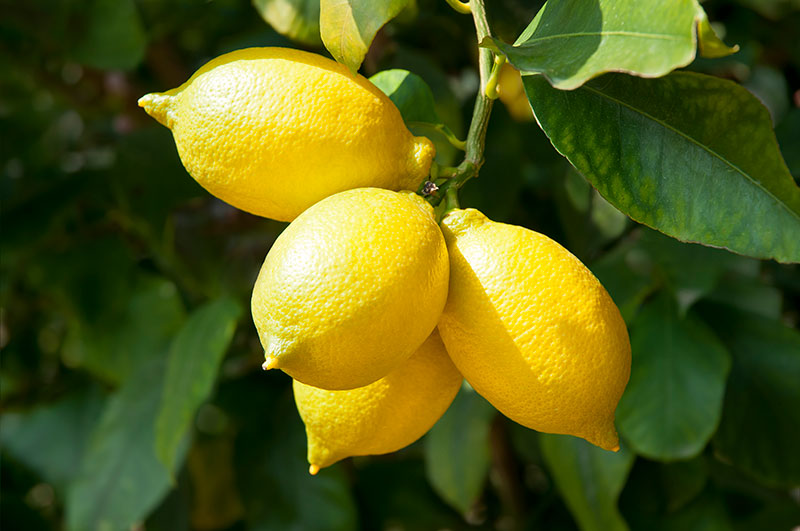
Indoor lemon trees look as great as their lemons taste.
Pollinating and Pruning Indoor Lemons
Unlike some fruit trees, lemons are self-pollinating. That means they don't need pollen from another lemon tree in order to bear fruit. But in nature, lemon trees rely on insects to pollinate their blossoms. Better pollination translates to more and better fruit.
With popular indoor varieties, your tree should bear fruit without insect help — but you can also play pollinator and give Mother Nature a hand. When lemon flowers are blooming and you pause to inhale that intoxicating fragrance, gently shake the branches before you walk away. This helps distribute pollen within the flowers, so it can do its thing. If you want to make some busy bee noises, go ahead. That can only help, right?
Indoor lemon trees typically need little to no pruning. Some lemon trees have thorns, but most indoor varieties don't. Even so, wear long sleeves and gloves to prune away any thorns, shoots or roots near soil level. Wait until after fruit sets to prune branches, so you don't accidentally prune away your prize.
At Pennington, we've been helping people create the yards and gardens of their dreams since 1945. From indoor lemon trees to sustainable lawn alternatives and mini wildflower meadows, we're here to help your dreams come true. Have a question or a dream to share? We'd love to hear it. Let us help you nurture your roots.
Always read product labels thoroughly and follow the instructions carefully.

